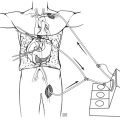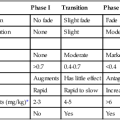Medical school is famously demanding, and Medical Students face a vast volume of information to master before each exam. As educators and exam preparers, we understand that the right books can make all the difference. High-quality textbooks and review guides serve as the foundation for effective study, helping to clarify complex concepts and reinforce memory. Our team has identified top Books for Medical Students across all core subjects, ensuring each recommendation is aligned with key curricular goals and exam requirements. In the sections below, we detail our picks for each major discipline, along with practical strategies to get the most out of these resources.

Preparing for medical exams is about more than just collecting books – it’s about choosing high-yield resources and using them strategically. We recommend combining comprehensive textbooks with focused review guides. For example, a detailed anatomy atlas paired with a concise high-yield outline helps bridge deep understanding and efficient recall. Consistent study habits and active review are crucial. Additionally, we encourage students to supplement book learning with practice questions and group discussions. Such an approach ensures both breadth of knowledge and mastery of the specifics that often appear on exams.
For some students, personalized support can further boost exam readiness. Beyond reading, engaging with expert-driven assistance can address exam challenges more directly. Many students today turn to reliable services like Online Exam Help from Scholarly Help, where human assistance ensures exams are managed efficiently. This added layer of support can reduce stress, save time, and allow medical students to focus more on mastering essential knowledge while ensuring exam success.
Anatomy and Physiology Books for Medical Students
A firm grasp of anatomy and physiology is vital for success in medical school and on board exams. We emphasize study aids that visualize structures clearly and explain physiological mechanisms in clinical context. Top picks include:
- Anatomy Textbooks: Moore’s Clinically Oriented Anatomy and Gray’s Anatomy for Students are excellent core texts. They explain anatomy with clear diagrams and clinical correlations that medical students find invaluable for exam questions.
- Anatomy Atlases: Netter’s Atlas of Human Anatomy and Rohen’s Color Atlas of Anatomy stand out as visual supplements. Netter’s artistic illustrations and Rohen’s real cadaver photos both help students recognize structures during lab practicals and practical exams.
- Physiology Guides: For understanding body systems, Costanzo’s Physiology and Guyton and Hall Physiology are top choices. We find Costanzo’s concise style especially helpful for mastering complex topics like cardiovascular and renal physiology. For review, the BRS Physiology book offers summaries and practice questions to reinforce high-yield principles.
- Review Outlines: BRS Gross Anatomy and Netter’s Anatomy Flash Cards provide quick review of essential points. These complements allow rapid self-testing on anatomy details as exam time approaches.
When using these resources, we advise medical students to actively draw diagrams and explain systems out loud. This active engagement turns passive reading into deeper learning. By alternating thorough texts with review outlines, one can build a strong foundation and then efficiently consolidate knowledge before an exam.
Biochemistry and Genetics Books for Medical Students
Biochemistry underlies many exam topics, from metabolism to molecular genetics. The right biochemistry texts balance depth with clarity:
- Core Biochemistry Texts: Lippincott Illustrated Reviews: Biochemistry is a favorite for its clear diagrams and clinical notes. Harper’s Illustrated Biochemistry (by Murray) provides in-depth explanations and clinical correlations. Both are authored by leaders in the field and used by top medical programs.
- High-Yield Reviews: Lehninger Principles of Biochemistry offers rigorous detail for those who seek deeper understanding, while First Aid for the Basic Sciences: Biochemistry distills must-know facts in exam style. We often recommend students read sections of Lehninger and then test themselves using the concise summaries in First Aid.
- Genetics Reference: Medical Genetics (Thompson & Thompson) or Nyquist’s Fundamentals of Genetics are clear choices if genetics will be tested. These texts explain the genetic basis of disease in accessible language and include diagrams of key processes like DNA replication and gene regulation.
- Mnemonic Aids: The Lange Biochemistry and Genetics Flash Cards (by Campo) are very useful for memorizing pathways, enzymes, and clinical conditions. Flashcard-based review has proven effective for many medical students, especially in biochem where rote memorization is common.
When studying biochemistry and genetics, we encourage a blended approach: read a chapter in a main text, then summarize it in your own notes or flashcards. Drawing metabolic pathways by hand and quizzing with flashcards turns heavy content into manageable pieces. This strategy leverages both comprehension and recall, which is crucial for exam prep.
Microbiology and Immunology Books for Medical Students
Microbiology and immunology are high-yield subjects on many exams. We highlight resources that simplify these complex topics:
- Microbiology Texts: Clinical Microbiology Made Ridiculously Simple (by Gladwin and Trattler) is a classic for quick learning; it presents microbes in an outline format with humorous mnemonics. For a more comprehensive reference, Jawetz, Melnick & Adelberg’s Medical Microbiology is thorough and well-illustrated.
- Immunology Guides: Janeway’s Immunobiology (by Murphy) is the gold-standard immunology textbook for deep understanding. For step 1 review, Basic Immunology: Functions and Disorders of the Immune System (by Abbas) or Lippincott Illustrated Reviews: Immunology provide clear summaries. These resources help medical students grasp immune mechanisms that underpin many diseases.
- Review Summaries: Deja Review: Microbiology and Immunology presents bite-sized Q&A style facts that are excellent for last-minute review. SketchyMicro (visual mnemonic videos) is another modern tool; although not a book, it’s widely recommended by students to reinforce visual memory of pathogens.
- Rapid Review: BRS Microbiology and Immunology (if available) or MicroCards offer concise bullet-point summaries. Flashcards (physical or app-based) are particularly effective in these subjects due to the need to memorize numerous organisms and immune processes.
To make the most of microbiology study, we suggest classifying bugs by shape, staining, or clinical syndromes, then quizzing yourself repeatedly. Combining detailed reading from primary texts with periodic testing on smaller review materials helps ensure that key facts stick for the exam.
Pathology and Pharmacology Books for Medical Students
Pathology and pharmacology dominate many medical exams, so focusing on high-yield resources is key:
- Pathology Textbooks: Robbins & Cotran Pathologic Basis of Disease (or its “Basic” version) is the comprehensive choice. Its depth is matched by Robbins Review of Pathology, the Q&A book we strongly recommend for practice questions. Many students swear by Pathoma (by Dr. Sattar) – the book and videos clearly explain pathology concepts in a high-yield, exam-oriented way.
- Pharmacology Texts: For drug learning, Lippincott’s Illustrated Reviews: Pharmacology is our top pick; it explains drug mechanisms with diagrams and clinical notes. Katzung & Trevor’s Basic and Clinical Pharmacology is another authoritative text, favored by many for its clarity and question bank. We also endorse using BRS Pharmacology for quick review of key drugs and receptors.
- High-Yield Outlines: PreTest Pharmacology and RxPx series (Pharmacology) contain practice questions and succinct reviews. For pathology review, Goljan’s Rapid Review Pathology is known for its bullet-point format and “blue boxes” highlighting commonly tested facts. These guides complement the main texts and are helpful to reinforce memory.
- Pharmacology Mnemonics: Keeping track of hundreds of drugs can be overwhelming. Resources like PharmCards or Khan Academy videos (though not books) are valuable supplements. Within books, sections summarizing drug classes or including mnemonic tables prove indispensable. We often tell students to create their own drug charts parallel to reading the text.
We encourage medical students to actively quiz themselves in pathology and pharmacology. Going through practice questions in tandem with reading reinforces the mode in which exam questions are asked. It also helps identify weak areas early, so you can revisit those topics in your textbooks.
Clinical Medicine and Board Review Books
As students enter clinical rotations, exam focus shifts to patient care and case management. The following books help bridge textbook knowledge to clinical practice and board examinations:
- USMLE Step 1 & COMLEX-1: First Aid for the USMLE Step 1 remains the cornerstone review book. We advise reading First Aid multiple times and annotating it with information from your coursework. Complement First Aid with Kaplan Lecture Notes (Step 1), a seven-book series that thoroughly covers each subject in depth. Crush Step 1 (by MedQuest) is another popular high-yield review with practice questions.
- *USMLE Step 2 CK & COMLEX-2: Master the Boards USMLE Step 2 CK (by Dr. Kachur) is written in a straightforward style and focuses on exam-relevant content. The Kaplan Step 2 CK Lecture Notes (five-book set) cover core clinical specialties. For internal medicine, Step-Up to Medicine and MKSAP for Students are excellent for understanding disease management. Bates’ Guide to Physical Examination and History Taking is invaluable for clinical skills and is often recommended for Step 2 CS (or similar exams).
- Case and Question Banks: Although not traditional books, we must stress how question banks complement reading. Resources like UWorld, Amboss, and Pastest simulate the exam format. For a text-like practice, USMLE World Step 1, Step 2 question collections, and Case Files series (for each clerkship) provide case-based learning that solidifies concepts from textbooks.
- Specialty References: Certain subjects may require targeted texts. For pediatrics, Nelson Textbook of Pediatrics or Blueprints Pediatrics are go-to references. In obstetrics and gynecology, Williams Obstetrics and BluePrints OBGYN are comprehensive. For surgery, Schwartz’s Principles of Surgery and PreTest Surgery are common picks. We mention a few so students can seek out the best match for their exam format and curriculum.
Our strategy for clinical study is to read relevant sections of these books during rotations and then review them again before clerkship exams. By integrating book study with hands-on experience, students reinforce clinical reasoning and recall details at test time.
Study Strategies and Additional Resources
A well-rounded preparation goes beyond reading alone. As we guide students, we emphasize combining these books with proven study methods:
- Active Recall and Testing: Use flashcards (digital apps like Anki or handwritten cards) to test yourself on facts from your books. Writing out processes or drawing anatomy diagrams from memory strengthens retention. After reading a chapter, summarize key points without looking, then check for accuracy.
- Regular Review Schedules: Consistency is vital. We recommend spacing study sessions over time (spaced repetition) rather than cramming. Revisiting notes and flashcards weekly helps move information into long-term memory. Tools like calendar planners or study apps can help schedule review of each book’s chapters.
- Group Study and Teaching: Explaining concepts to peers can expose gaps in understanding. We encourage study groups where members quiz each other on book content or solve clinical cases together. Teaching a topic from a book strengthens your own mastery.
- Combining Resources: While we focused on books, reputable online question banks and video lectures should complement them. For example, after reading a section in BRS Pathology, practice questions on the same topic from UWorld can reinforce learning. Just be sure to return to the textbook for any explanation you didn’t fully grasp.
- Self-care and Focus: Finally, mental well-being affects studying. Regular breaks, exercise, and good sleep improve concentration for reading dense materials. A relaxed mind helps absorb the content of these books more effectively.
In summary, our curated list of textbooks and review guides offers Medical Students the comprehensive resources they need to excel. By studying these recommended Books for Medical Students alongside active learning strategies, students can build confidence and competence. We encourage adopting a balanced study plan: deep reading from authoritative texts, regular review of high-yield summaries, and consistent self-testing. With these tools and methods, medical students are well-equipped to tackle their exams and advance successfully through their medical education.




